
Gunpowder, also commonly known as black powder to distinguish it from modern smokeless powder, is the earliest known chemical explosive. It consists of a mixture of sulfur, charcoal, and potassium nitrate (saltpeter). The sulfur and charcoal act as fuels while the saltpeter is an oxidizer. Gunpowder has been widely used as a propellant in firearms, artillery, rocketry, and pyrotechnics, including use as a blasting agent for explosives in quarrying, mining, building pipelines, tunnels, and roads.

Midleton is a town in south-eastern County Cork, Ireland. It lies approximately 16 km east of Cork City on the Owenacurra River and the N25 road, which connects Cork to the port of Rosslare. A satellite town of Cork City, Midleton is part of Metropolitan Cork. It is the central hub of business for the East Cork Area. Midleton is within the Cork East Dáil constituency.
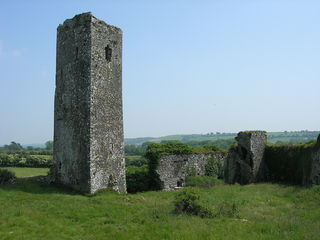
Ballincollig is a suburban town within the administrative area of Cork city in Ireland. It is located on the western side of Cork city, beside the River Lee on the R608 regional road. In 2016 it was the largest town in County Cork, at which time the Ballincollig Electoral Division had a population of 18,621 people. It is located beyond the green belt from the suburbs of Bishopstown and Wilton. Historically home to the Ballincollig Royal Gunpowder Mills which is now a Regional Park, the town has seen much growth in recent years as a satellite of Cork City.

Haulbowline is an island in Cork Harbour off the coast of Ireland. The world's first yacht club was founded on Haulbowline in 1720. The western side of the island is the main naval base and headquarters for the Irish Naval Service, with the eastern side previously used for heavy industry and later redeveloped as a park.
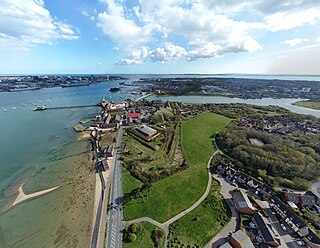
Priddy's Hard is a former military installation in Gosport on the south coast of England, named for the original landowner and the firm beach found there.
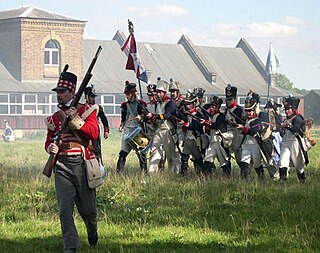
The Royal Gunpowder Mills are a former industrial site in Waltham Abbey, England. It was one of three Royal Gunpowder Mills in the United Kingdom. Waltham Abbey is the only site to have survived virtually intact.
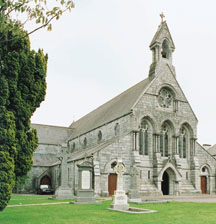
The Church of St Mary and St John is the older of two Roman Catholic churches in the town of Ballincollig, County Cork, Ireland. The church was built in the 1860s, funded by donations from the local people of the time, and officially opened on 28 October 1866. The church is in a Gothic Revival style, combined with some features of other periods. It is built of ashlar limestone with roof slates.

Sir Thomas Tobin was a British merchant. He moved to Ballincollig in 1863 to become managing director of Ballincollig Royal Gunpowder Mills. He played an active part in the social and industrial life of Ballincollig and Cork until his death in 1881.
Oriel House is a hotel in the west end of the town of Ballincollig, County Cork, Ireland. It was built early in the 19th century to house administrating officers of the Ballincollig Gunpowder Mills site.

A gunpowder magazine is a magazine (building) designed to store the explosive gunpowder in wooden barrels for safety. Gunpowder, until superseded, was a universal explosive used in the military and for civil engineering: both applications required storage magazines. Most magazines were purely functional and tended to be in remote and secure locations. They are the successor to the earlier powder towers and powder houses.

From 1802 to 1921, Eleutherian Mills was a gunpowder mill site used for the manufacture of explosives founded by Eleuthère Irénée du Pont, which grew into the DuPont company. The name also refers to the house on the hill above the mills, which was the first du Pont family home in America. In 1957 the site became an outdoor museum when the Hagley Museum and Library was founded. The site was declared a National Historic Landmark in 1966.
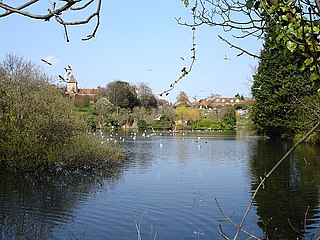
Faversham, in Kent, England, has claims to be the cradle of the UK's explosives industry: it was also to become one of its main centres. The first gunpowder plant in the UK was established in the 16th century, possibly at the instigation of the abbey at Faversham. With their estates and endowments, monasteries were keen to invest in promising technology.

Ballincollig GAA is a Gaelic Athletic Association (GAA) club based in the town of Ballincollig, County Cork, Ireland. The club is affiliated with the Cork GAA board and it fields Gaelic football and hurling teams in Muskerry divisional competitions. As of 2010, the club was participating in the Cork Senior Football Championship and the Cork Intermediate Hurling Championship.

A powder mill was a mill where gunpowder is made from sulfur, saltpeter and charcoal.

The Cork gunpowder explosion was a large explosion that took place in Cork, Ireland, on 3 November 1810.
Oriental Powder Company was a gunpowder manufacturer with mills located on the Presumpscot River in Gorham and Windham, Maine. The company was one of the four largest suppliers to Union forces through the American Civil War.
The Dublin gunpowder explosion was a large explosion that took place on the quays of Dublin on 11 March 1597. The explosion demolished as many as forty houses, and left dozens of others badly damaged. The explosion claimed the lives of 126 people and inflicted countless injuries.

Carrigrohane is a village and civil parish situated on the south bank of the River Lee to the west of the city of Cork in Ireland. It is connected by the Carrigrohane Straight, 4 miles (6.4 km) west of Cork and is also in the northeastern part of Ballincollig. It contains St Peter's Church of the Resurrection. In 1837, it had a population of 1921 inhabitants. The civil parish is almost evenly split between the baronies of Muskerry East to the west and the Barony of Cork to the east.

St Senan's Church is a small Anglican Gothic Revival church located in Inniscarra, County Cork, Ireland. It is dedicated to Senán mac Geirrcinn, who is the patron saint of Inniscarra.

Ballincollig Regional Park is a park in Ballincollig, County Cork, Ireland, created on the grounds of the former Ballincollig Royal Gunpowder Mills.

























